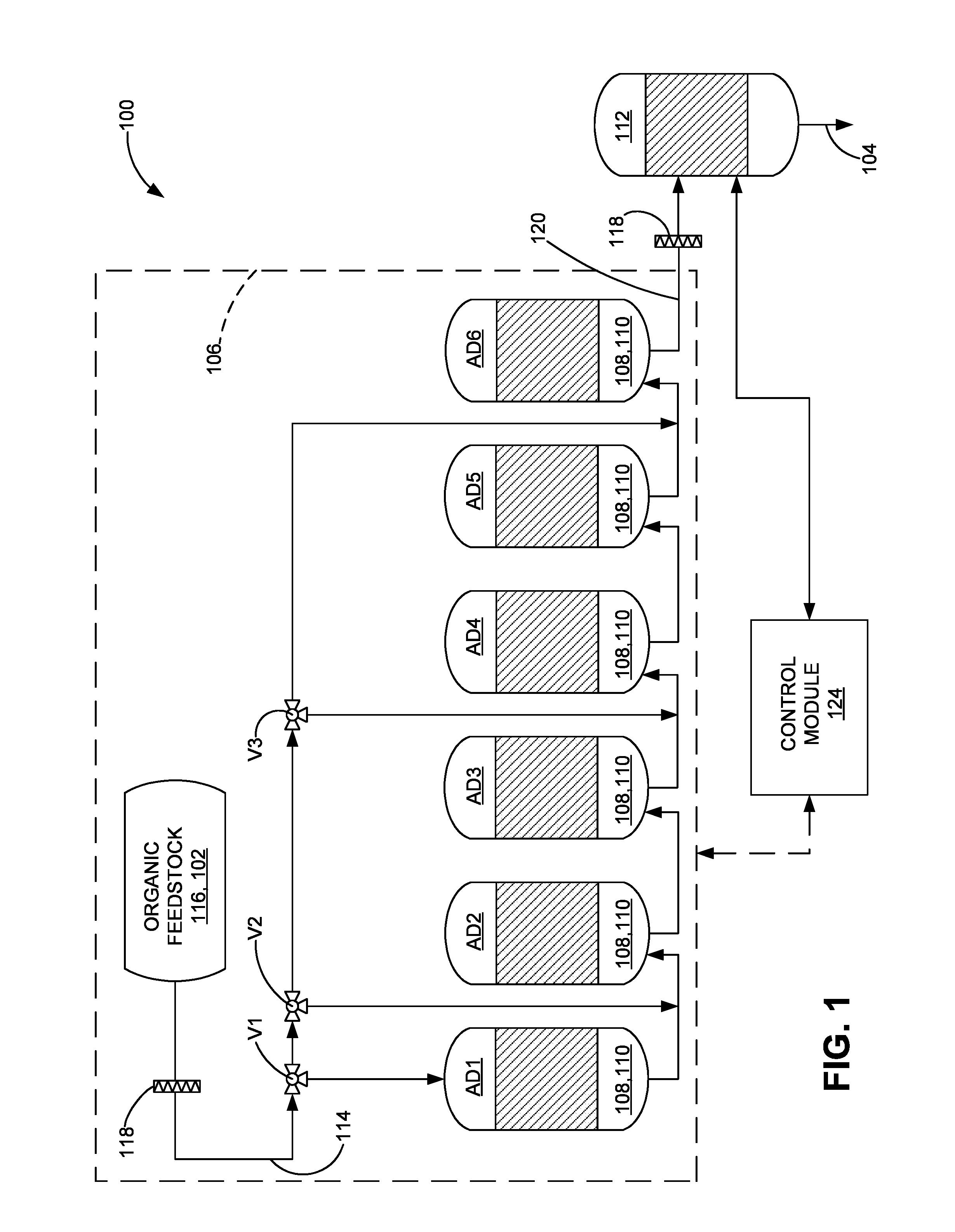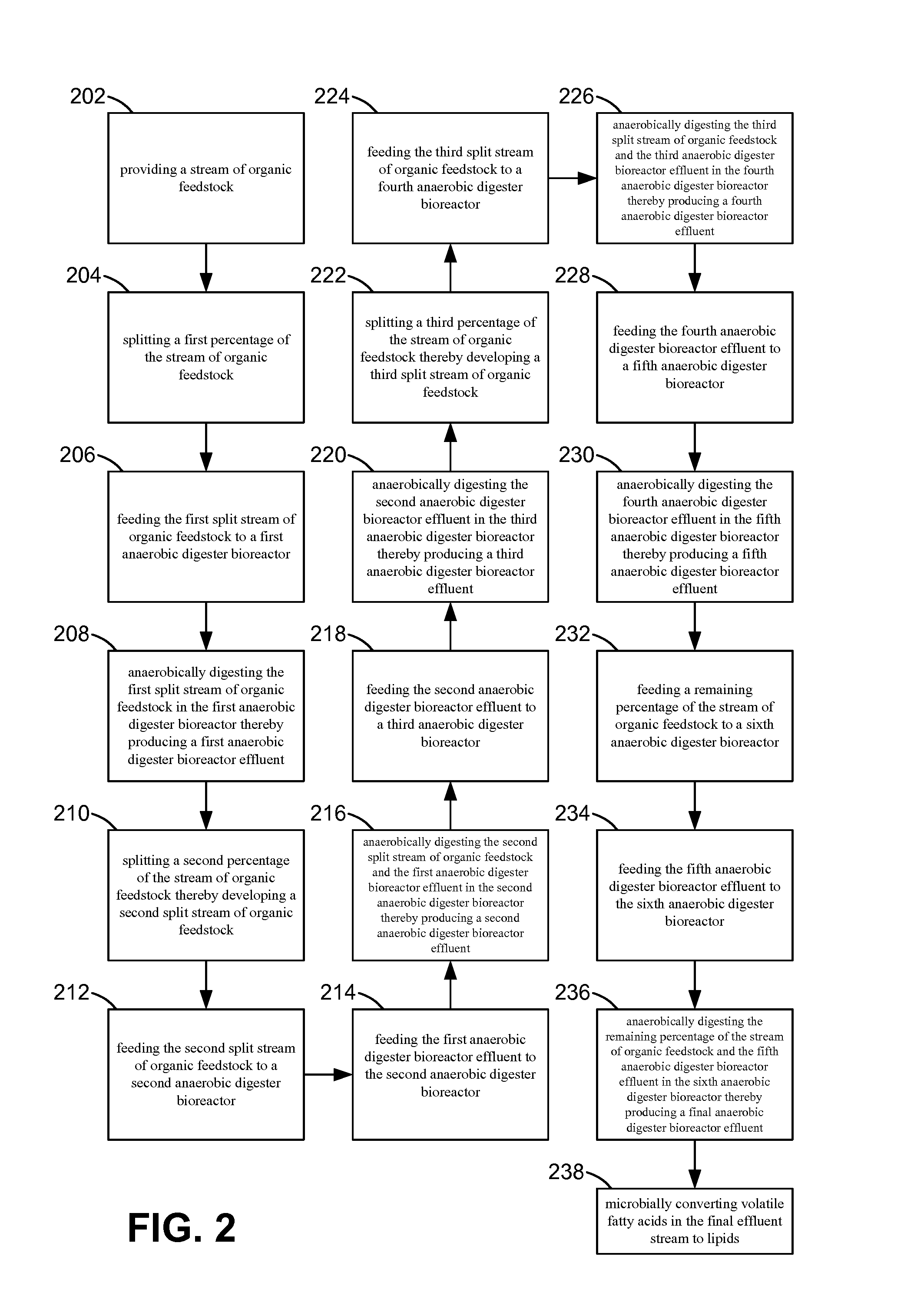Methods and Systems for Converting Volatile Fatty Acids To Lipids
- Summary
- Abstract
- Description
- Claims
- Application Information
AI Technical Summary
Benefits of technology
Problems solved by technology
Method used
Image
Examples
Embodiment Construction
[0014]Referring again to FIGS. 1 and 2, aspects of the disclosed subject matter include methods and systems using bioreactors for enhancing the production of both methane and volatile fatty acids and converting the volatile fatty acids to lipids.
[0015]Referring now to FIG. 1, some embodiments include a system 100 for converting volatile fatty acids 102 to lipids 104 using a feedstock treatment module 106 to produce both methane 108 and volatile fatty acids 110 and an aerobic bioreactor 112 for converting the volatile fatty acids to lipids.
[0016]System 100 includes a supply stream of organic feedstock 114 that is typically stored in a tank 116 and pumped to feedstock treatment module 106. Methods and systems according to the disclosed subject matter are adaptable for simultaneously enhancing the production of methane and volatile fatty acids from virtually any organic feedstock, including but not limited to the following: Wastewater; Sewage sludge; Fecal sludge; Agricultural waste; A...
PUM
 Login to View More
Login to View More Abstract
Description
Claims
Application Information
 Login to View More
Login to View More - R&D
- Intellectual Property
- Life Sciences
- Materials
- Tech Scout
- Unparalleled Data Quality
- Higher Quality Content
- 60% Fewer Hallucinations
Browse by: Latest US Patents, China's latest patents, Technical Efficacy Thesaurus, Application Domain, Technology Topic, Popular Technical Reports.
© 2025 PatSnap. All rights reserved.Legal|Privacy policy|Modern Slavery Act Transparency Statement|Sitemap|About US| Contact US: help@patsnap.com


